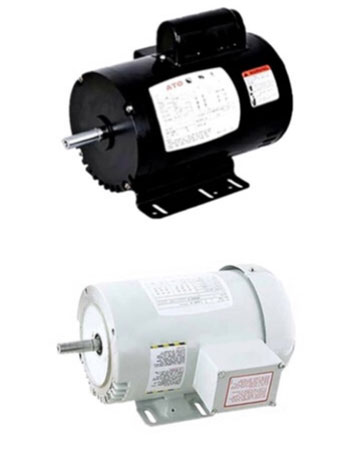Induction Motor Working Principle
The induction motor is also called asynchronous motor, it's a device for rotating a rotor by placing the rotor in a rotating magnetic field and thereof obtaining a rotating moment under the action of the rotating magnetic field. The rotor is a rotatable conductor, usually in the shape of a squirrel cage.
When three-phase stator winding is passed through with three-phase symmetrical alternating current, a rotating magnetic field is generated, and the rotating magnetic field rotates in the inner bore of the stator. The magnetic force lines cut the wires on the rotor and induce current in the rotor wire. As the electromagnetic torque is generated by the interaction force between the stator magnetic field and the rotor current, the rotating magnetic field of the stator rotates the rotor with current carrying wires.
Through the relative motion of the rotating magnetic field generated by the stator (its speed is synchronous speed n1) and the rotor winding, the rotor winding cuts the magnetic induction line to generate induction electromotive force, thus induced current is generated in rotor winding. The induction current in the rotor winding acts on the magnetic field to produce electromagnetic torque, thus making the rotor rotate. As the rotor speed approaches the synchronous speed, the induced current decreases and the electromagnetic torque decreases accordingly. When the asynchronous motor works in the motor state, the rotor speed is smaller than the synchronous speed. In order to describe the difference between rotor speed n and synchronous speed n1, slip ratio is introduced.
The rotating magnetic field continuously cuts off the closed conductors in the rotor, resulting in induced electromotive force and induced current. The induction current in the rotor interacts with the rotating magnetic field to generate electromagnetic torque, which makes the rotor to rotate in the same direction as the rotating magnetic field. For example, the squirrel-cage asynchronous motor, as the rotating magnetic field cuts rotor conductors clockwise, which is equal to counter clockwise rotation of conductor, direction of induced current is judged by the right-hand rule, in which the magnetic line is perpendicular to the palm of the hand and the thumb points to the movement direction of conductor, the direction of four fingers is the direction of the induced current. Then left-hand rule is applied. The magnetic line is perpendicular to the palm of the hand and four fingers point to the direction of current, the thumb direction is the direction of the rotor being subjected to electromagnetic force (as shown in the figure, direction of the electromagnetic torque T ). The electromagnetic torque is formed under the action of electromagnetic force, and the rotor is rotated along the direction of the rotating magnetic field.
In induction motor, in order to maintain the rotating magnetic field to constantly cut the rotor conductor to generate induction current, the rotor speed is smaller than that of the rotating magnetic field.
ATO has 1hp to 5hp single-phase induction motors and three-phase motors.

